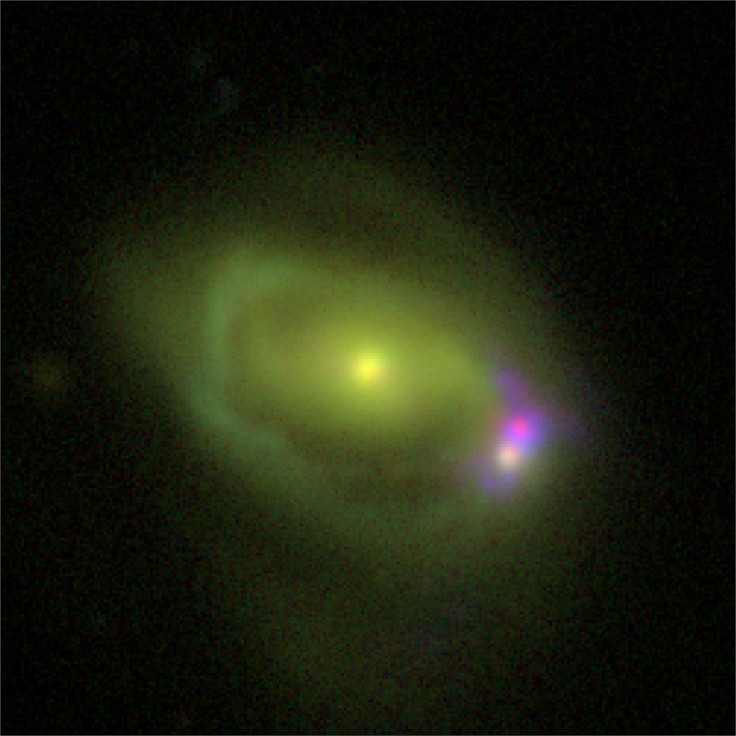Supermassive Black Hole In A Tiny Galaxy? NASA’s NuSTAR Studying Galaxy Merger To Understand It

Ever so often, the universe shows us something we just don’t understand. And a supermassive black hole found inside a galaxy considered much too small to host it is only one such thing, but quite interesting nonetheless.
A system called Was 49 is the result of the merger of a large disk galaxy, called Was 49a, and a small “dwarf” galaxy, called Was 49b. The latter rotates within the disk of the former, at a distance of about 26,000 light-years from its center. Ordinarily, one would expect the central black hole of the larger galaxy to become active during the merger, gobbling up gas and dust and throwing out large amounts of high-energy X-ray.
Read: Supermassive Black Hole Kicked Out Of Its Galactic Core
However, in the case of Was 49, NASA’s Nuclear Spectroscopic Telescope Array (NuSTAR) mission showed it was the smaller Was 49b that had an active galactic nucleus, and that the supermassive black hole at its center was about 2 percent of the galaxy’s own mass, much larger than galaxies of comparable size. The findings were based on the extremely high luminosity in high-energy X-rays spotted by NuSTAR.
Nathan Secrest, lead researcher and postdoctoral fellow at the U.S. Naval Research Laboratory in Washington, said in a statement Monday: “This is a completely unique system and runs contrary to what we understand of galaxy mergers. … We didn't think that dwarf galaxies hosted supermassive black holes this big. This black hole could be hundreds of times more massive than what we would expect for a galaxy of this size, depending on how the galaxy evolved in relation to other galaxies.”
Read: How Did Supermassive Black Holes Form In The Very Early Universe?
Scientists are trying to understand how this phenomenon could have come about. Maybe it was already so massive before the merger of the two galaxies began, or maybe it grew to its astonishing size soon after the merger began. What is almost certain, though, is that in several hundred million years, black holes at the centers of both the galaxies will merge as well, making a truly gigantic supermassive black hole.
“This study is important because it may give new insight into how supermassive black holes form and grow in such systems. By examining systems like this, we may find clues as to how our own galaxy’s supermassive black hole formed,” Secrest said in the statement.
© Copyright IBTimes 2024. All rights reserved.





















